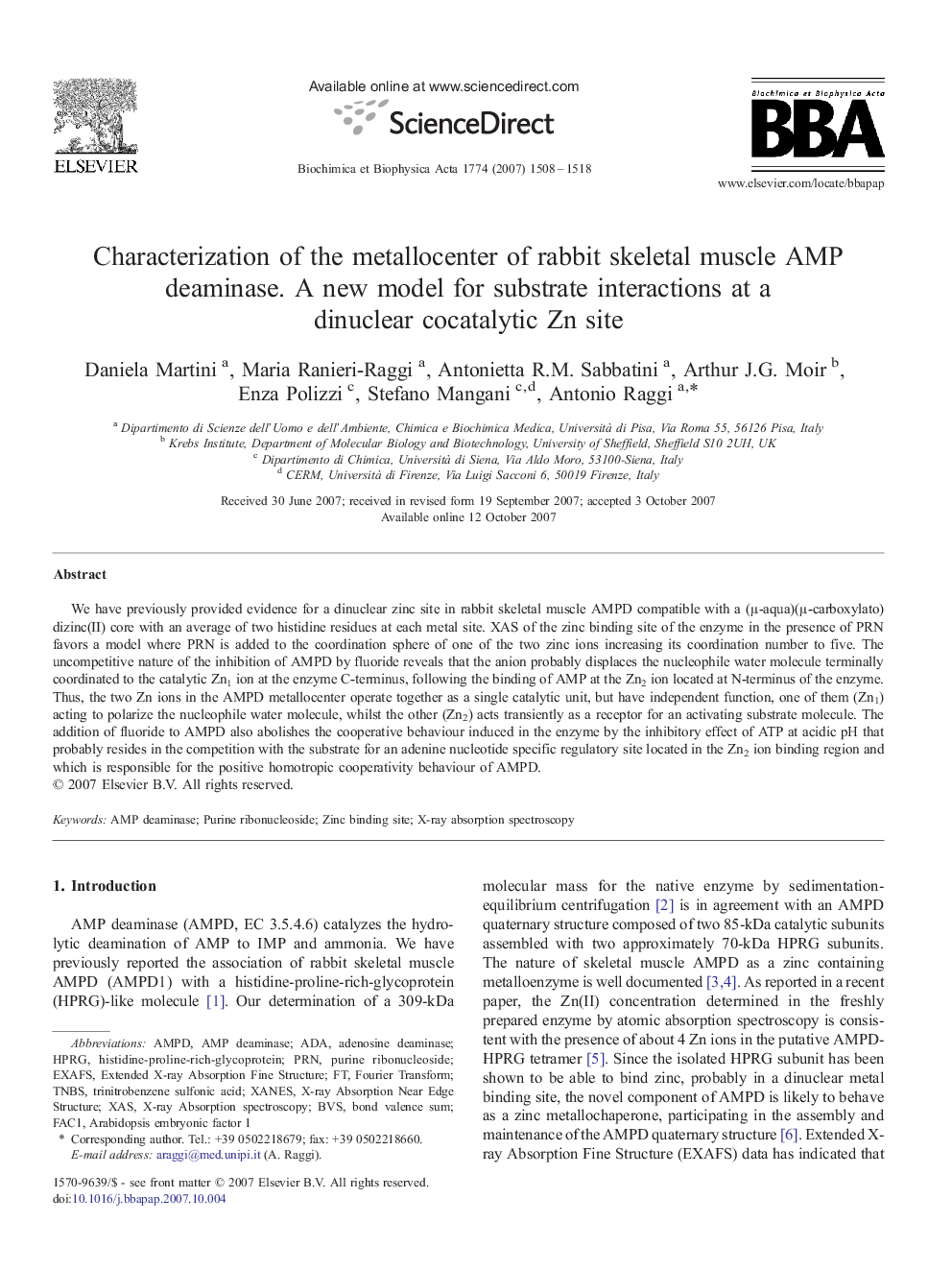| Article ID | Journal | Published Year | Pages | File Type |
|---|---|---|---|---|
| 1179418 | Biochimica et Biophysica Acta (BBA) - Proteins and Proteomics | 2007 | 11 Pages |
We have previously provided evidence for a dinuclear zinc site in rabbit skeletal muscle AMPD compatible with a (μ-aqua)(μ-carboxylato)dizinc(II) core with an average of two histidine residues at each metal site. XAS of the zinc binding site of the enzyme in the presence of PRN favors a model where PRN is added to the coordination sphere of one of the two zinc ions increasing its coordination number to five. The uncompetitive nature of the inhibition of AMPD by fluoride reveals that the anion probably displaces the nucleophile water molecule terminally coordinated to the catalytic Zn1 ion at the enzyme C-terminus, following the binding of AMP at the Zn2 ion located at N-terminus of the enzyme. Thus, the two Zn ions in the AMPD metallocenter operate together as a single catalytic unit, but have independent function, one of them (Zn1) acting to polarize the nucleophile water molecule, whilst the other (Zn2) acts transiently as a receptor for an activating substrate molecule. The addition of fluoride to AMPD also abolishes the cooperative behaviour induced in the enzyme by the inhibitory effect of ATP at acidic pH that probably resides in the competition with the substrate for an adenine nucleotide specific regulatory site located in the Zn2 ion binding region and which is responsible for the positive homotropic cooperativity behaviour of AMPD.
